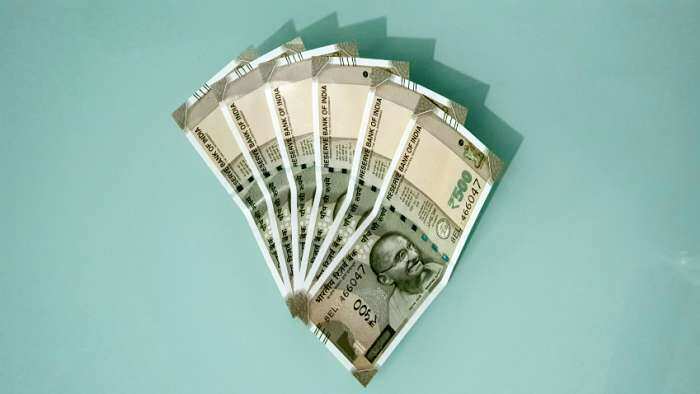Demonetisation impact long gone from Indian markets
Indian markets faced difficult times due to demonetisation. However, this has been heavily offset by economic reforms taken during the period Dec - till date.

Key Highlights:
- Sensex, Nifty have given more than 20% returns
- Indian markets at fifth place by surging 23% compared to peers
- Investors dampened Sensex and Nifty to lows when demonetisation took place
Sensex, Nifty has been particularly cheerful this year with many stocks scaling at new heights indicating the negative fallout of demonetisation has been long gone.
Between December 2016 – till date, both Sensex and Nifty have given over 20% returns and are trading near 31,000-mark and 9,700 – level, respectively.
Indian markets stand at fifth place with 23% rise globally, following Turkey at 24.2%, South Korea at 25%, Argentina at 29.6% and Poland at 30.2%.
Vinod Nair, Head Of Research, Geojit Financial Services said, "Currently, India is amongst some of the expensive economies of the Emerging Markets with a P/E of 18 on a one year forward basis."

USA's S&P 500 stood at 7.7% between December 2016 – till date.
Both Sensex and Nifty are trading at a 5% premium to MSCI World Index and 40% premium to MSCI Emerging market Index with Nifty being a top performer globally.
Here's an view of Sensex, Nifty performance in last three years between December – June period.

Sensex and Nifty has surged over 21.79% and 22.74% between December 2016 - till date, way higher than December 2015 - June 2016 period - where Sensex rose by just 3.37% and Nifty by 4.29%.
During December 2014 - June 2015 period, Sensex and Nifty had sequential growth of over 1%.
Most of the indices during this period have seen a huge rally.

On Sensex, realty and consumer durables are the top performer which grew over 72.24% and 54.31% respectively.
Sectors like oil and gas, basic material, finance, metal, realty, energy and capital goods have given returns in the range of 20% - 35%.
ALSO READ: Sensex at 30,000: Where to next

At the same time on Nifty, finance, banking and FMCG sectors have increased over 34%. Auto also gave more than 24% returns.
ALSO READ: Nifty at 9,700-mark: Where does the index go once GST comes in?
It was only pharma and IT sectors which were laggards of both Sensex and Nifty due to the global scenario which made investors reluctant for these shares.
Care Ratings said, "The overtly buoyant sentiment has been driven by some positive economic numbers in the areas of GDP growth and industrial production (under new methodology), Lower inflation – both CPI and WPI, Expectation of lower interest rates, Strong external position."
It added, a strong rupee performance due to large foreign inflows in both equity and debt segments boded well for the stock markets.
Between April - May 2017, Indian rupee has appreciated over 3% against dollar. In last five months of 2017, INR has appreciated by more than 5% against the dollar on account of continued foreign flows into the Indian markets.
In last five months, foreign inflows in equity stood at a total of Rs 49,447 crore and that of debt market at Rs 80,249 crore.
"We have a cautions view in the near time and expect some consolidation, during which we suggest investors to buy at dip with a long to medium outlook. The out-performer sectors could be Defence, Logistics, Chemicals, Banks, Infrastructure and Auto," Nair said.
"In the case of Metals and Oil & Gas the future outlook depends on the world economy which during the last 12 months had good economic data with positive economist outlook in the future, " added Nair.
Get Latest Business News, Stock Market Updates and Videos; Check your tax outgo through Income Tax Calculator and save money through our Personal Finance coverage. Check Business Breaking News Live on Zee Business Twitter and Facebook. Subscribe on YouTube.
RECOMMENDED STORIES

Top 7 Mid Cap Mutual Funds With Highest SIP Returns in 10 Years: Rs 13,333 monthly SIP investment in No. 1 fund is now worth Rs 67,61,971

Sukanya Samriddhi Yojana vs PPF: Rs 1 lakh/year investment for 15 years; which can create larger corpus on maturity?

Rs 55 lakh Home Loan vs Rs 55 lakh SIP investment: Which can be faster route to arrange money for Rs 61 lakh home? Know here

Coca-Cola & Domino's-backed food delivery startup loses battle to Zomato & Swiggy; shuts down consumer app

Top 7 Mutual Funds With Highest SIP Returns in 1 Year: Rs 33,333 monthly SIP investment in No. 1 scheme has generated Rs 4.77 lakh; know about others too

Rs 4,000 Monthly SIP for 33 years vs Rs 40,000 Monthly SIP for 15 Years: Which can give you higher corpus in long term? See calculations
04:58 PM IST










 Final Trade: Sensex tumbles 1,100 pts, Nifty slips below 24,350; PSU banks drag
Final Trade: Sensex tumbles 1,100 pts, Nifty slips below 24,350; PSU banks drag Midday Market Report: Sensex tumbles 930 points, Nifty slips below 24,400; Airtel, TCS drag
Midday Market Report: Sensex tumbles 930 points, Nifty slips below 24,400; Airtel, TCS drag  Nifty50 tumbles over 1% amid broad sell-off: Key factors impacting market
Nifty50 tumbles over 1% amid broad sell-off: Key factors impacting market  FIRST TRADE: Nifty falls 73 points, Sensex down over 300 points
FIRST TRADE: Nifty falls 73 points, Sensex down over 300 points Traders' Diary: Buy, sell or hold strategy on Piramal Pharma, Vedanta, Thermax, Indus Tower, and other top stocks today
Traders' Diary: Buy, sell or hold strategy on Piramal Pharma, Vedanta, Thermax, Indus Tower, and other top stocks today